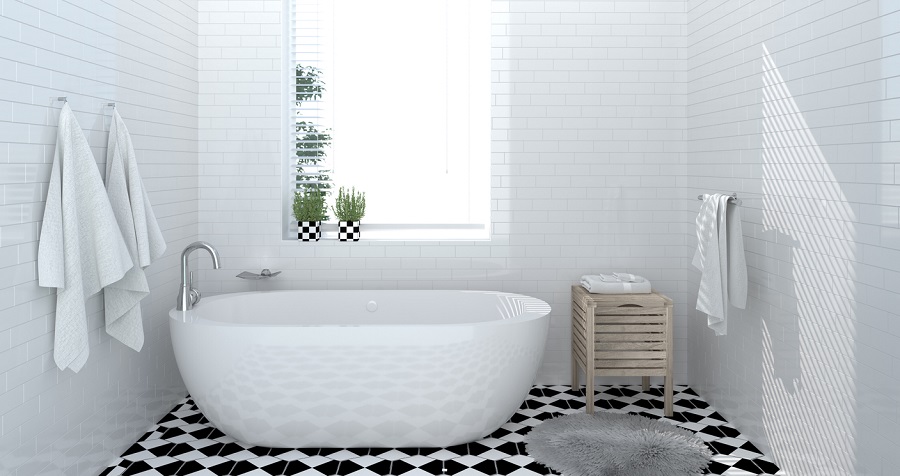
What is the Cost of Replacing a Bathtub in 2025?
In 2025, homeowners can expect to spend between $1,500 and $8,000 on bathtub replacement, depending on the project’s scope. For
Tired of standard bathtubs and looking for a unique centerpiece for your home? Today we will look at 4 standard bathtub alternatives and discuss the benefits they can bring to your home.
Below you will find the most popular standard bathtub choices on the market today:
When it comes to bathroom design, standard bathtubs remain the most popular choice because of their functionality, affordability, and adaptability to different spaces. Each style has unique benefits, from maximizing limited square footage to providing a more seamless, built-in aesthetic. Understanding the common types can help homeowners choose the best fit for their layout, budget, and design goals.
Alcove bathtubs are a classic option for smaller bathrooms, designed to fit into a recessed area bordered by three walls. Their space-efficient layout makes them ideal for compact homes and apartments, often paired with a shower for added functionality. The design is straightforward, budget-friendly, and practical for everyday use.
Drop-in bathtubs are installed into a framed enclosure, with the rim of the tub visible above the surrounding deck. They are popular for their affordability and versatility, since the surrounding structure can be customized with tile, stone, or wood finishes. This makes them a practical and stylish choice that works in many different bathroom layouts.
Similar to drop-ins, undermount bathtubs are installed beneath the surrounding deck, creating a seamless, flush appearance with the surface material. While they don’t necessarily save space, they offer a sleek, modern look and allow for more customization in bathroom design. Homeowners often choose this style to highlight high-end materials like marble or quartz.
Corner bathtubs are designed for bathrooms with limited floor space, fitting neatly into a corner with a triangular, round, or oval shape. They are larger than alcove tubs and can feel more luxurious while still optimizing square footage. This style is often chosen when homeowners want both comfort and efficiency.
Bath and shower combos are among the most practical and versatile options, combining two essential fixtures into one. Installed in alcove or standard tubs, this setup allows for both quick showers and relaxing baths. Their adaptability makes them one of the most common choices for families and households that want maximum functionality in a single space.
While traditional bathtub styles remain common, many homeowners are looking for alternatives that better match their space, lifestyle, and design preferences. In 2025, bathtub alternatives are more diverse than ever, ranging from compact soaking tubs that maximize small bathrooms to high-end spa-like options designed for relaxation and hydrotherapy. These choices not only expand design possibilities but also address specific needs such as accessibility, water efficiency, and luxury.
The following options highlight the most popular alternatives to standard bathtubs, along with their pros and cons, to help you determine which solution best fits your home.
A freestanding bathtub is any bathtub that can stand on its own. What makes freestanding bathtubs unique is their ability to be placed anywhere in the bathroom. In addition, freestanding bathtubs are available in many high-quality materials, allowing them to retain heat over long periods of time.
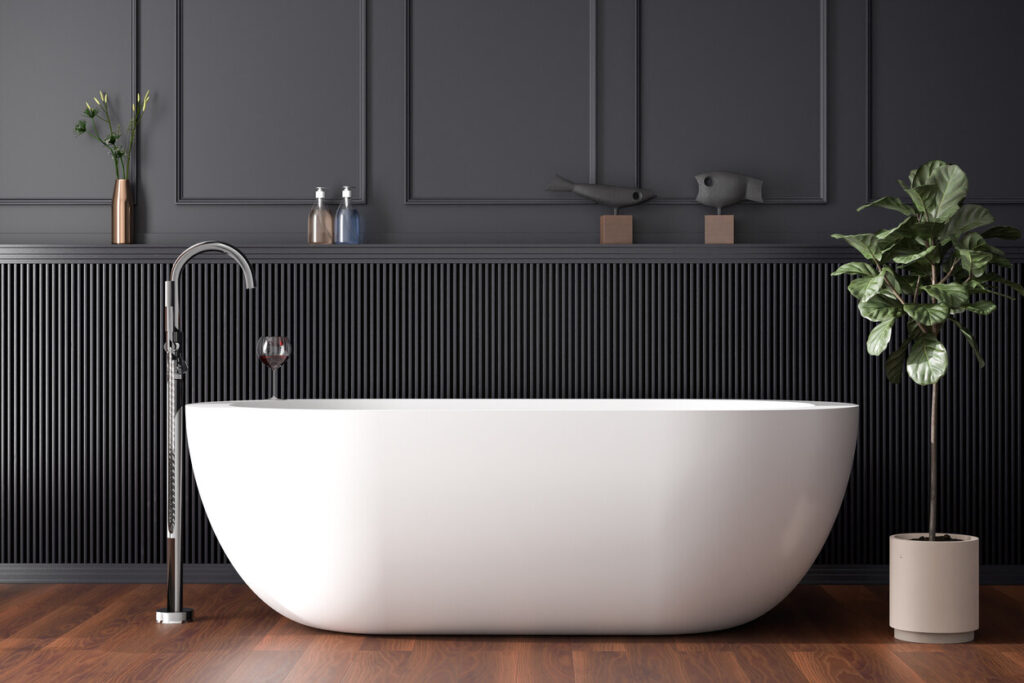
Price
Freestanding bathtubs vary widely in cost depending on size and material, with entry-level acrylic models starting around $700–$1,000, while luxury stone resin or cast iron options can exceed $5,000. Though the upfront cost can be higher than built-in tubs, the variety of price points makes them accessible for both mid-range and high-end projects. Their durability often offsets the initial expense, providing long-term value.
Installation & Maintenance
Installation is generally straightforward, requiring only proper plumbing placement, but the weight of some models may demand reinforced flooring. Maintenance is relatively easy since there are no surrounding enclosures where grime can build up, and surfaces like acrylic or fiberglass only require gentle cleaning. Cast iron or stone resin tubs may need occasional resealing, but overall upkeep is minimal.
Resale/Value
Freestanding bathtubs are considered a premium design feature that can increase a home’s resale value. Their aesthetic appeal often signals luxury and modern design, which can help position a property as more desirable to buyers. In higher-end real estate markets, a freestanding tub is frequently seen as a “must-have” in master bathrooms.
Freestanding tubs are often chosen as a statement piece in bathrooms, but for those with limited space or a preference for compact designs, Japanese soaking tubs offer an appealing alternative.
Pros
Cons
Freestanding tubs are often chosen as a statement piece in bathrooms, but for those with limited space or a preference for compact designs, Japanese soaking tubs offer an appealing alternative.
A Japanese soaking tub, also called an ofuro, is a deep, compact bathtub designed for sitting rather than reclining. Unlike standard tubs, these are typically circular or square and prioritize depth over length, allowing a person to submerge comfortably in a smaller footprint. They are especially popular in bathrooms where space is limited but relaxation and immersion are still desired.
Price
Japanese soaking tubs typically range from $1,500–$6,000 depending on size, material, and craftsmanship. Entry-level acrylic models are more affordable, while premium wood or stone designs command higher prices due to their artisanal construction. Though more expensive than many standard tubs, they are considered a long-term investment in comfort and design.
Installation & Maintenance
These tubs are relatively easy to install, requiring only proper plumbing and enough floor support for the smaller but often heavier structure. Maintenance depends heavily on material: acrylic and fiberglass are low-maintenance, while wood models require sealing and careful upkeep to prevent water damage. Because of their depth, cleaning may take a bit more effort compared to shallower tubs.
Resale/Value
Japanese soaking tubs are a unique, luxury feature that can differentiate a home, especially in urban or space-conscious markets. Their design conveys modernity and wellness-oriented living, appealing to buyers looking for spa-like elements. While niche, they can increase value for buyers prioritizing relaxation and efficient use of space.
Pros
Cons
For homeowners who want a freestanding look with a timeless, vintage feel, clawfoot bathtubs remain a classic and charming alternative.
A clawfoot bathtub is a classic style of freestanding tub characterized by its four decorative legs, often styled as claws or ornate supports. These tubs have been popular for centuries and remain a staple in traditional and vintage-inspired bathrooms. While they share similarities with modern freestanding tubs, clawfoot models stand out for their historical charm and ability to create a statement piece in both classic and eclectic designs.
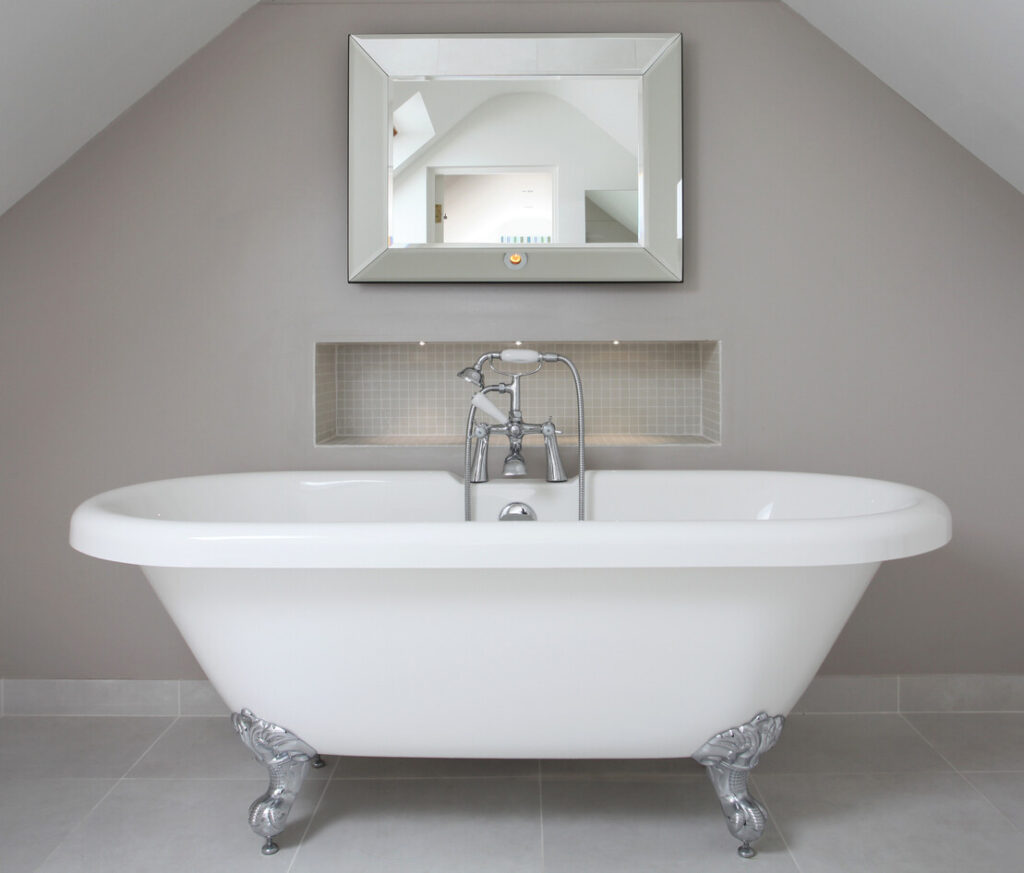
Price
Clawfoot bathtubs generally range from $1,000–$4,000, with acrylic options on the lower end and cast iron or copper models on the higher end. Antique or custom designs can be significantly more expensive due to rarity and craftsmanship. Their affordability compared to other luxury tubs makes them a popular choice for homeowners seeking elegance without extreme cost.
Installation & Maintenance
Installation is fairly straightforward but does require plumbing that connects through the exposed base of the tub. Because they are heavy, especially cast iron models, reinforced flooring may be necessary. Maintenance is relatively easy: surfaces are smooth and accessible for cleaning, though keeping the space beneath and around the legs dust-free may require extra attention.
Resale/Value
Clawfoot tubs are considered a desirable vintage feature that can add both charm and value to a home. Buyers often view them as a timeless luxury, especially in historic homes or properties with period design. In modern markets, they can also serve as a unique differentiator, though they may not appeal to buyers looking for minimalist, space-saving solutions.
Pros
Cons
While clawfoot tubs highlight vintage charm, homeowners seeking a spa-like experience often turn to jet tubs or Jacuzzis, which bring hydrotherapy and modern luxury into the bathroom.
Jet tubs, commonly known as Jacuzzis, are designed to provide a spa-like experience at home. These tubs use heated water or air jets to massage muscles and joints, creating both a therapeutic and luxurious bathing option. Their unique design includes multiple nozzles and a motorized pump system, making them especially appealing for those who prioritize relaxation, hydrotherapy, and overall wellness.
Price
Jet tubs and Jacuzzis are among the most expensive bathtub options, typically ranging from $2,500–$8,000 depending on size, brand, and features. High-end models with advanced controls, LED lighting, or aromatherapy integration can exceed $10,000. While the initial cost is high, many homeowners view the investment as worthwhile for its health benefits and luxury appeal.
Installation & Maintenance
Installation is more complex than other tub types, often requiring both plumbing and electrical work. Professional installation is recommended to ensure the motor, jets, and heating elements are properly connected. Maintenance can also be demanding, as the jets need regular cleaning to prevent buildup and the pump system requires periodic servicing. These tubs also use a significant amount of water and may increase energy bills due to heating requirements.
Resale/Value
A well-maintained Jacuzzi can add considerable luxury value to a home, particularly in upscale markets where spa-like features are highly desirable. However, the appeal can vary—some buyers may be deterred by the higher maintenance needs. Overall, they are most attractive to homeowners or buyers who prioritize relaxation and wellness.
Pros
Cons
For homeowners who prefer practicality and efficiency over luxury, showers remain one of the most common and space-saving alternatives to bathtubs.
Showers are one of the most common alternatives to bathtubs, offering a quick and efficient way to bathe. Unlike tubs, which require filling, showers use a continuous spray of water, making them highly practical for everyday routines. They are available in a variety of designs—from simple stall showers to walk-in glass enclosures—and can be customized with features like rainfall heads, body sprays, and steam systems.
Price
Showers vary widely in cost depending on design and features. A basic prefabricated shower unit can start around $800–$1,500, while custom tiled walk-in showers can range from $3,000–$8,000 or more. Luxury options with multiple heads, steam functions, and premium finishes can easily exceed $10,000.
Installation & Maintenance
Installation depends on complexity. Prefabricated units are relatively easy to install, while custom walk-ins require extensive plumbing, waterproofing, and tiling. Maintenance often involves regular cleaning of grout, glass, and fixtures to prevent buildup of soap scum and mold. While showers generally use less water than bathtubs, sealing and waterproofing must be properly maintained to avoid leaks and water damage.
Resale/Value
Showers are highly appealing to modern buyers, especially in urban markets where efficiency and accessibility matter. Walk-in showers in particular are considered a must-have feature in many home remodels, boosting property value. However, in family homes, buyers may still expect at least one bathtub for children, which can make shower-only homes slightly less versatile.
Pros
Cons
While showers emphasize efficiency and space-saving, shower chairs add an additional layer of safety and accessibility, making them an essential option for individuals with limited mobility or injuries.
Walk-in bathtubs are designed with accessibility and safety in mind, making them especially popular among seniors and individuals with limited mobility. These tubs feature a built-in door that allows users to enter without stepping over a high ledge, along with safety grips, built-in seating, and anti-slip flooring. Their design emphasizes comfort and independence, while still providing the full soaking experience of a standard bathtub.
Price
Walk-in bathtubs generally range from $2,500–$7,500, depending on size, material, and added features such as hydrotherapy jets or heated surfaces. Premium models with advanced accessibility functions can exceed $10,000. While more expensive than traditional tubs, they are often viewed as a health and lifestyle investment.
Installation & Maintenance
Installation is more involved than a standard bathtub, often requiring professional remodeling to accommodate the tub’s size, plumbing, and electrical features. Maintenance varies depending on the model: simple versions are easy to clean, while hydrotherapy-equipped models require more upkeep for the jets and pumps. One drawback is that users must remain inside the tub while it fills and drains, which can make the experience less convenient compared to standard tubs.
Resale/Value
Walk-in tubs can increase a home’s value in markets with older buyers or in properties designed with aging-in-place features. They are highly attractive to buyers who prioritize accessibility, but may be less appealing in younger family markets where a standard tub or shower may be preferred. Overall, they are seen as a specialized feature that boosts value for the right audience.
Pros
Cons
Less appealing to families with young children
Standard bathtubs provide a great asset to any bathroom, but they are a bit limited in design. Additionally, they take up a fair bit of room as well. Alternative bathtub designs help address these issues by providing a bathtub that has the same functionality while providing its own benefits as well.
Standard bathtubs tend to take up a great deal of space. Alternative styles are designed to save space such as corner and soaking tubs. The round design means that you have more room to install a larger sink or extra storage space if you desire.
Standard bathtubs are a bit limited in their design. Perhaps your space is small and you need a bathtub that can allow you extra space in your apartment or home. Having a greater selection of designs can allow you to better customize your bath space.
Lifestyle change can signal the need for a new bathtub. As you get older, you need a bathtub that is easily accessible for both children and the elderly so a new design is warranted. Alternatively, you may find yourself more stressed and in need of a bathtub that can allow you better muscle relief than a standard bathtub.
When choosing a new or alternative bathtub, here are some helpful tips to remember before buying:
An important question to answer is why you need a new tub? Do you want a stylistic change? How big do you want your new tub to be? By addressing this question, you can easily narrow down what type of bathtub is suitable for you and your home which can save you money in the long term.
Before making a decision, you should do your research on different tub styles to see which is the most appropriate for you. Weigh your options carefully and understand each style’s pros and cons before purchasing. Consider factors such as the size of your bathroom, your budget, and the overall aesthetic you wish to achieve. By taking the time to compare each option, you can ensure that you end up with one of the best quality bathtubs on the market that not only fits your needs but also enhances your home’s value. Additionally, don’t forget to read customer reviews and seek expert recommendations to guide your final choice.
Bathtubs are expensive purchases, so it is key that you stick to your budget. While it may be attractive to purchase a whirlpool tub with fancy jet options, your budget may not support it long-term. As always, consider your needs before purchasing a bathtub.
A bathtub is the centerpiece of the bathroom and you should consider how it looks in it’s finished form. Bathmats, plants, towels, and other accents can provide great compliments to your bathtub and help elevate its look as well as the feel of your bathroom itself. When purchasing your tub, it is best to consider the whole of your bathroom, not just the tub itself.
Standard bathtubs are great options for most homes, but with lifestyle changes and a smaller space, alternative bathtubs are a great solution. So if you are tired of your standard bathtub, do the research and find a new bathtub alternative today to fit your needs.

Eric is the founder and president of Badeloft USA. He has been the president of Badeloft’s US division for over ten years and oversees all marketing and branding aspects of Badeloftusa.com.
His expertise lies in small business development, sales, and home and bathroom industry trends and information.
Contact us with any business related inquiries.
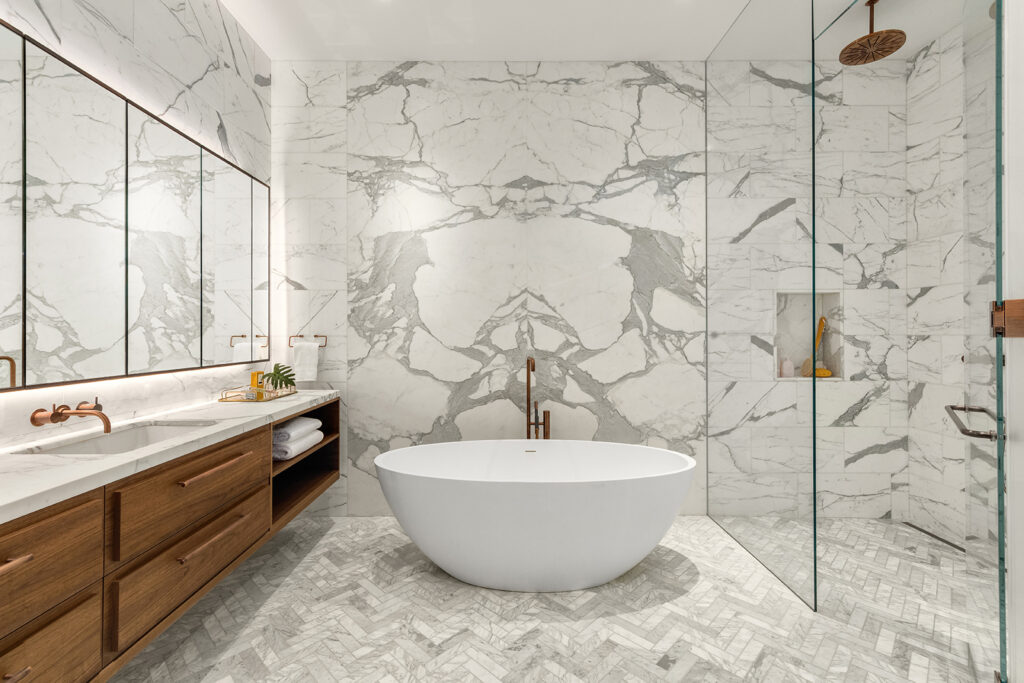
Free material samples and tub templates

In 2025, homeowners can expect to spend between $1,500 and $8,000 on bathtub replacement, depending on the project’s scope. For
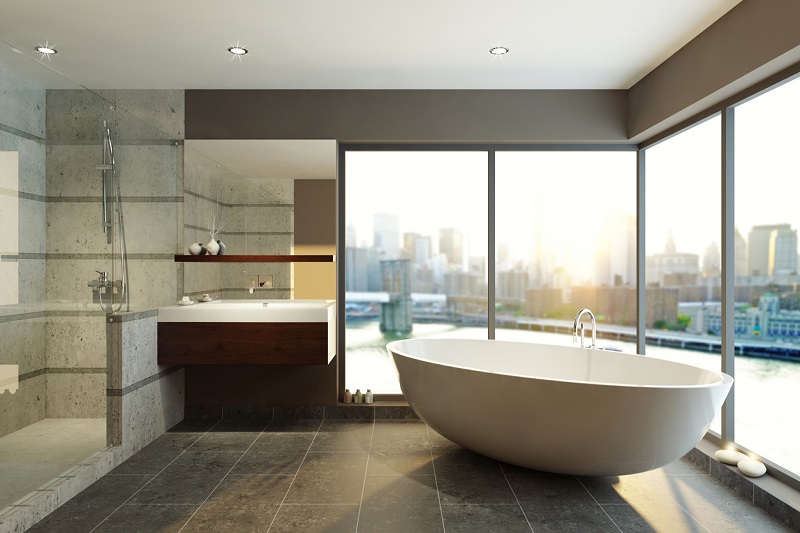
Choosing the right bathtub for your home can be exhausting and tedious. Many bathtubs today tend to be the same
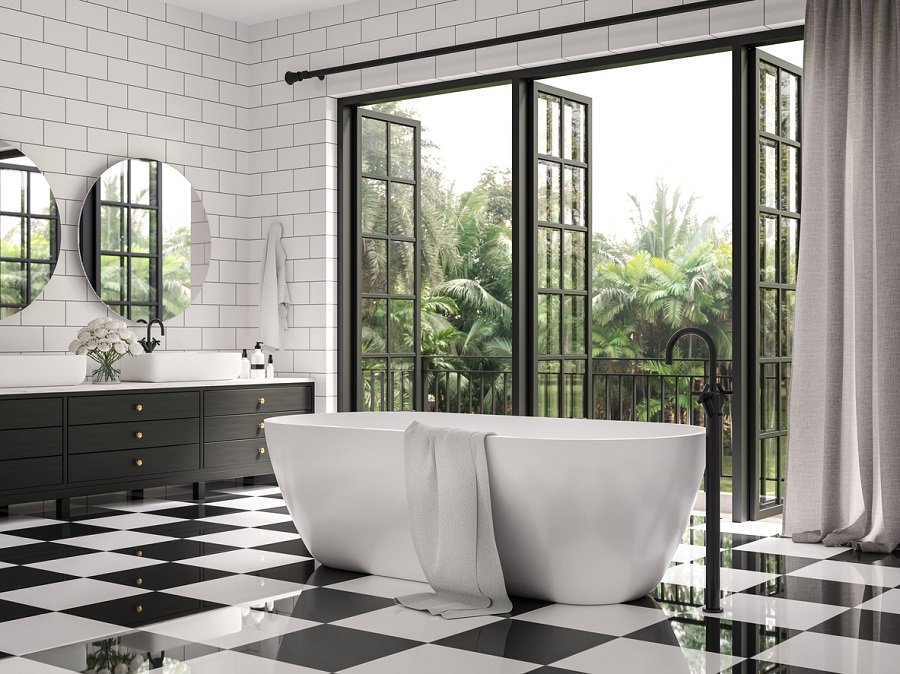
Tired of standard bathtubs and looking for a unique centerpiece for your home? Today we will look at 4 standard
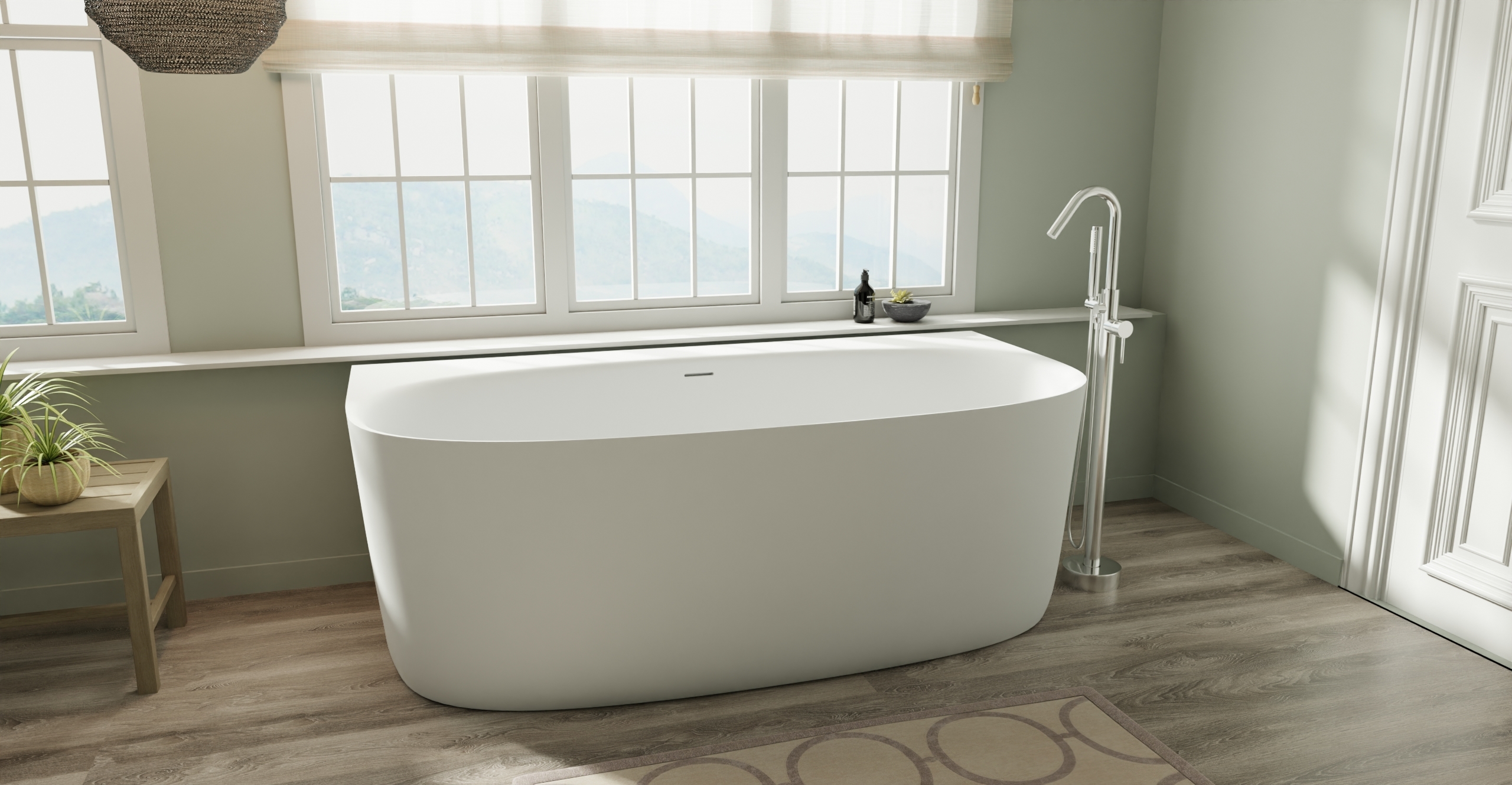
Bathrooms are no longer just functional—they’ve become personal sanctuaries where homeowners relax and recharge. In 2025, freestanding bathtubs are one
"*" indicates required fields
"*" indicates required fields
Request your free material sample below. By submitting, you agree to receive occasional product updates and offers from Badeloft. Unsubscribe anytime.
"*" indicates required fields